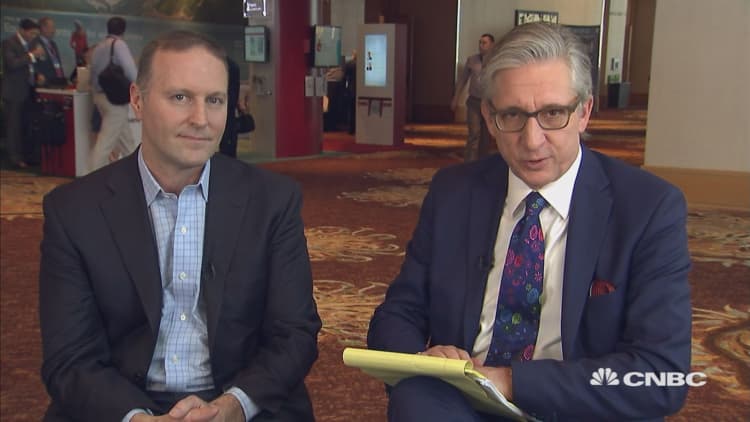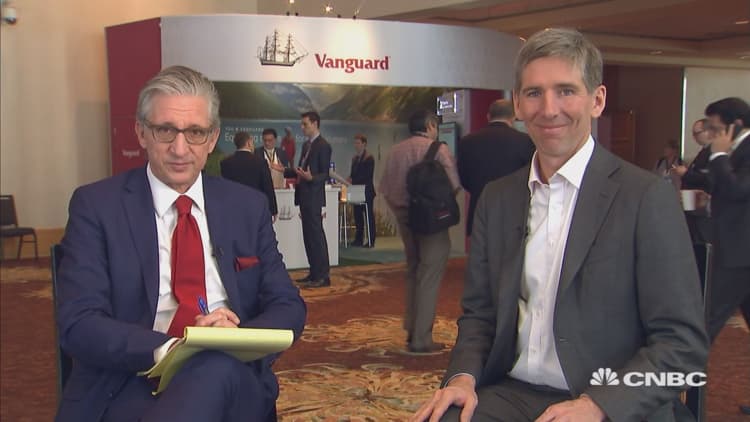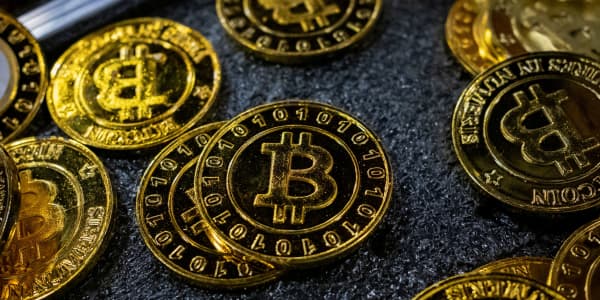Investors can buy and sell all types of assets at a low cost thanks to exchange-traded funds, but they can also get caught up in huge intraday market swings that sink their portfolios.
More than 1,200 securities, including many popular ETFs, had their trading halted across the major exchanges as the Dow Jones Industrial Average surrendered more than 1,000 points early in the day on Aug. 24, 2015. As ETFs rise in popularity — now representing more than $2.5 trillion — a fear that haunts ETFs more than any other is performance during future flash crashes.
Some ETFs fell well below their net asset value in the August 2015 flash crash — the value of the underlying stocks that are in their portfolios. ETFs losing more than 40 percent of their value at one point included the First Trust Dow Jones Internet Index, First Trust Consumer Discretionary AlphaDEX, iShares Global Healthcare, PowerShares Global Water Portfolio and iShares Russell Mid-Cap Value.
"ETF investors who traded at that point were impacted. And quite frankly, that is not an acceptable outcome for an ETF sponsor or anyone in the ETF ecosystem," Jim Ross, chairman of the global SPDR business at State Street Global Advisors, told the Inside ETFs conference this week.
If you don't have to trade in volatile markets, don't.Jim Rosschairman of the global SPDR business at State Street Global Advisors
There have been improvements made by ETF companies to limit volatility — ETFs performed better in the volatility after the Brexit. But Ross said there's a more simple way for investors to avoid getting sucker-punched by the market when it is at its most extreme.
"Understand the basics about trading ETFs," Ross said. "If you don't have to trade in volatile markets, don't."
When are markets most volatile? During the first and last 30 minutes of trading every day.
The most important — or dangerous — trading times
Exchange-traded funds do not trade like traditional mutual funds, which you can only buy or sell once per day after the markets close. ETF prices fluctuate continuously throughout the day like stocks.
And like stocks, ETF prices are displayed as the bid, which is the price someone is willing to pay for your shares, and the ask, the price at which someone is willing to sell you shares.
The difference between the bid and the ask is called the spread. The most widely traded ETFs have a tight bid-ask spread of a penny or two, like the SPDR S&P 500. Obscure funds, such as the recently launched Spirited Funds/ETFMG Whiskey & Spirits ETF, can have spread of a dime or more because fewer people are trading them. Those price differences can hurt investors when they trade.
More from ETF Strategist:
'This is the greatest deal in financial history' if you want to invest wisely
Dow 20,000 and ETFs
Not gold: Most investors are missing this year's best commodities bet
Exchange-traded funds also may be bought or sold at a premium or discount to the net asset value of the underlying assets, which can add to the price volatility.
During the first and last 30 minutes of trading, spreads are typically at their widest, and prices can be volatile because professional traders dominate the buying and selling of shares as they look for ways to make a buck.
If your focus is long-term, you can ditch the trading scrum altogether. "As a rule of thumb, ETF investors should avoid the first and last 30 minutes of trading," said Matt Hougan, CEO of Inside ETFs.



You may want to try to outsmart the market volatility and limit your risk with a stop-loss order, which tells the broker to sell an ETF when it reaches a certain price. But that would be a mistake.
ETF investors who used stop-loss orders were burned by the extreme volatility of the 2015 flash crash because their orders were executed as prices plummeted and then quickly bounced back. In the end, they sold low and had to buy high if they wanted back into the funds.
Instead, investors who are more sophisticated should use stop-limit orders, State Street's Ross said. These orders allow investors to buy or sell an ETF at a specified limit price (or better) only after the stop price has been reached. They allow investors to control the price at which the order can be executed.
"Just as you would do when buying a car, set a price that you are willing to pay," Ross said.





